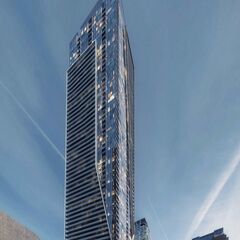innsertnamehere
Superstar
The problem with Y+E is that it is very difficult to get to for regional commuters. Highway access is non-existant, and while transit access is good, it isn't great. And you need great to generate new office growth.Have you seen the vacancy rates for office space downtown? When demand is high and supply is thinning, costs rise. That makes a market for good quality office space at lower rates, and Y&E is prime for that due to what fuels downtown: good transit access. In this case, it's from two intersecting rapid transit lines in the N-S and E-W directions, but what it doesn't have is direct access from the GO; getting there means transferring to the TTC, adding time and cost to commuters. But it would serve intra-Toronto office talent well, and it's why I took your point on AAA-class demand and walked back my statement a bit.
The only places you are seeing office growth are either places like Oakville or Mississauga with great highway access to large swaths of the GTA, or downtown around Union which allows people to commute from literally anywhere in the GTA within a reasonable time frame.



















